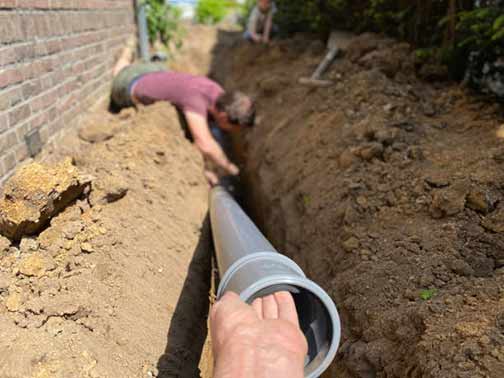
Replacing a broken sewer line is a challenging and costly project, says T-Square Management. Depending on the length of the sewer line, the material you plan to use, the repair method, and whether you are dealing with concrete surfaces, you may be looking at a cost of between $4,000 and $25,000.
Yet the truth about your sewer line is you have to replace it at some point. That’s because all sewer lines have an expiration date. When that time comes, you must replace the line. You do not want to be forced to replace the sewer line before its projected lifespan.
Your sewer line can fail before it reaches the end of its potential service period (as determined by the manufacturer). There are many reasons why this happens. Some of them are environmental, but the main reasons for premature sewer line failure are poor maintenance and abuse of the sewer line.
You can prevent premature sewer line failure and forced replacement if you avoid doing those things that accelerate the deterioration of your sewer line. Sewer lines that are used in the proper manner and maintained adequately will often outlast the expiration date set by their manufacturer.
10 tips to help you avoid premature sewer line replacement
- Do not put non-biodegradable items into your toilet. Even some items described as “flushable” can clog and damage your sewer line. Examples include paper towels and wipes, hygiene and sanitary products, tissues containing lotions, cat litter, latex condoms, etc. Only human waste, water, and toilet paper should enter your toilet.
- Grease buildup within the pipes is one of the worst things that can happen to your sewer line. Do not dump used-up fats, oils, and grease from cooking and other activities into your drains. These materials are usually runny while they are inside the kitchen, but they become hard and sticky once they get into the cold environment of the sewer line.
- Food waste can create problems inside your sewer line. Starchy foods like rice, potatoes, and peels will swell and block the pipes. Stringy veggies trap debris. Eggshells and coffee grounds settle inside the pipes. As a rule, you should dump leftover food in the trash and not in the sink, even if you have a garbage disposal.
- Chemical drain cleaners are convenient but ineffective. Frequent use of chemical drain cleaners will harm your sewer line. Chemical drain cleaners contain harsh corrosives, and their primary method for dissolving clogs is to generate high heat. This heat often damages the pipes, while most of the debris inside the pipe gets left behind.
- Hair catchers can save your sewer line from damage by preventing seemingly-harmless materials like soap scum and human hair from getting into the shower drain. Food strainers also help to ease the task of keeping small food particles out of your sink drain. Be sure to buy the right size and clean them periodically.
- Nearby tree roots pose a major threat to the health of your sewer line. First, tree roots compete with the sewer line for space, and they can accidentally shift the pipes out of place. Second, tree roots can penetrate and block the sewer line in a bid to access the nutrient-rich water inside it.
- Most problems that cause premature sewer line failure can be prevented if they are found on time. The only way these problems can be detected early is if the sewer line is inspected. Doing a sewer camera inspection once a year helps you stay ahead of any issues in your sewer line.
- You can’t stop buildup inside your sewer line because sewer lines carry wastewater with more solid and semi-solid materials. Some of these materials are deposited inside the pipes, and with time, they can clog the line. You can remove this debris by hydro jetting or rodding your sewer line on a schedule.
- To stay ahead of developing issues within your sewer line, you must be able to identify the warning signs of those problems. Sewer line problems rarely happen without first leaving a telltale sign. Most homeowners overlook these signs because they don’t understand the language of their sewer system.
The primary goal of learning the warning signs of sewer line problems and inspecting your sewer line regularly is to identify and solve the issues in the system. When dealing with sewer line problems, delay can be lethal. A minor clog today can become a backed-up sewer line tomorrow.
Finally, you need the expertise of a licensed and experienced plumber. A competent sewer line repair service provider can educate you on the signs of sewer line problems in your home. They can also work with you to create an effective sewer line maintenance plan.

